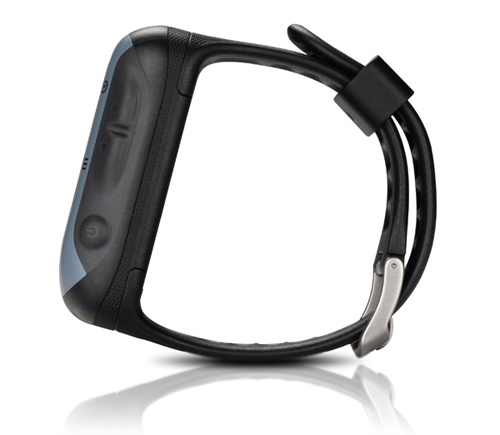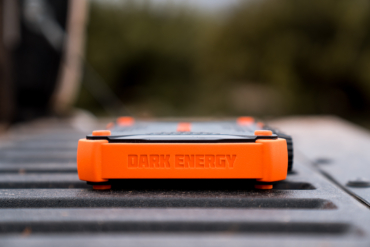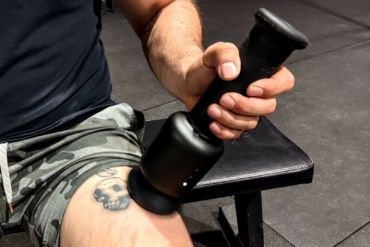Magellan has long been a main player in GPS devices made for the outdoors. This year, the company is jumping into the world of fitness.
Two wristwatch products in the company’s line target runners and bikers. They have built-in GPS and small screens to view data on items from your heart rate to distance traveled on a run through the woods.
For the past couple months, we have been testing the company’s Switch model. It sits on the wrist unobtrusively but not small — its rectangle face measures about 1.7 X 2.3 inches, requiring the entire width of my arm.

It’s 0.67-inch thick, too. But inside the box are circuit boards and sensors that can measure and assess a person’s efforts and motions as they exercise outside.
Like other GPS-based watches, it can be frustrating to stand around before a workout and wait for a signal. I often set the Switch outside for a few minutes before a run to let it find a hookup from above.
Once it’s synced to satellites, the watch records speed in real-time as well as your distance traveled. In my tests, the watch was at most times highly accurate and easy to use in the GPS mode.
Though this is a GPS watch, navigation is not its strength. There are no built-in maps, just arrows and line graphics to point toward plotted points. You can save a location and make “breadcrumb” trails, but don’t expect to chart a path through the wilds.
Fitness, not outdoor adventure, is this product’s purview. There are a litany of modes and workout measurement tools. At its simplest, you can record time and distance information to compare your exercise sessions over a period and assess fitness gains.

Workout geeks have all sorts of options for measuring speed, calories burned, lap times, heart rate, and other session data. The watch can be set to work with heart-rate monitor straps, foot pods, and cadence sensors on a bike.
Mostly, I stuck with the basics. It’s fun to see your speed and distance covered on a watch face. Once that thrill wears away, the Switch lets you dig in further and investigate more advanced features.
One feature I liked, the Activity Pacer, allows you to set distance, time, and pace for a run before heading out. It then estimates your time of arrival at the end and keeps you on pace throughout.
Activity Pacer is one feature that makes the Switch stand out. But in many ways this watch is not too different from what’s on the market, perhaps most closely related to the watches from the Garmin ForeRunner series.
To compare, we had a hardcore Garmin user test the Switch for a month. Our Team GearJunkie racer Andrei Karpov is something of a GPS watch junkie, recording almost every move he takes outdoors on his watch. He analyzes the data from adventure races, daily runs, bike rides, and orienteering races on training software as well as posts his “work” to the site Attackpoint.org.
Karpov took off his Garmin 310XT for a month and wore the Switch. He said the initiation process was somewhat difficult, as he was so used to the buttons and processes of the Garmin.

But after a couple uses, Karpov was confident with the watch and its functions. He said it tracked similarly to his Garmin. He wore the two watches and tested them side by side. There were small differences in how they read GPS data for distances, but overall functionality was about the same.
The screen orientation of the watches — the Switch versus the Garmin 310XT — is different. The Switch is horizontally oriented, the Garmin vertical. Karpov thought the Garmin seemed a tad bigger, but they measure almost the same.
There are seven total buttons on the Garmin. The Switch has just five. This was not a big deal to Karpov, who said you get used to either setup.
Battery life on the Garmin is better, lasting up to 20 hours, where the Magellan has about 8 hours of GPS use time between charges. (You can also use the Magellan for several days in its “watch” mode without the GPS on.)
The Garmin Forerunner 305, another similar watch Karpov used, has 6 hours of battery life.
All these watches can be found for about the same price online. Retail price tag of the 310XT is more than $350, though it’s now a couple years old and goes at $250 on many sites. The Garmin 305 costs about $175 on most sites.
Because it’s new, the Magellan Switch is not as discounted. Its msrp is about $230, and that’s what it costs on most sites. But there are a few places where the watch costs $199.
Any way you slice it, you’ll likely pay around $200 to $250 for one of these watches. Magellan also charges an extra $50 for a heart-rate chest band, which most serious exercisers will want.
Overall, the Switch was a solid product in our test. For anyone looking to get or stay in shape, a watch like the Switch, though an investment, should pay out in fitness dividends pretty fast.
—Stephen Regenold is founder and editor of www.gearjunkie.com.






